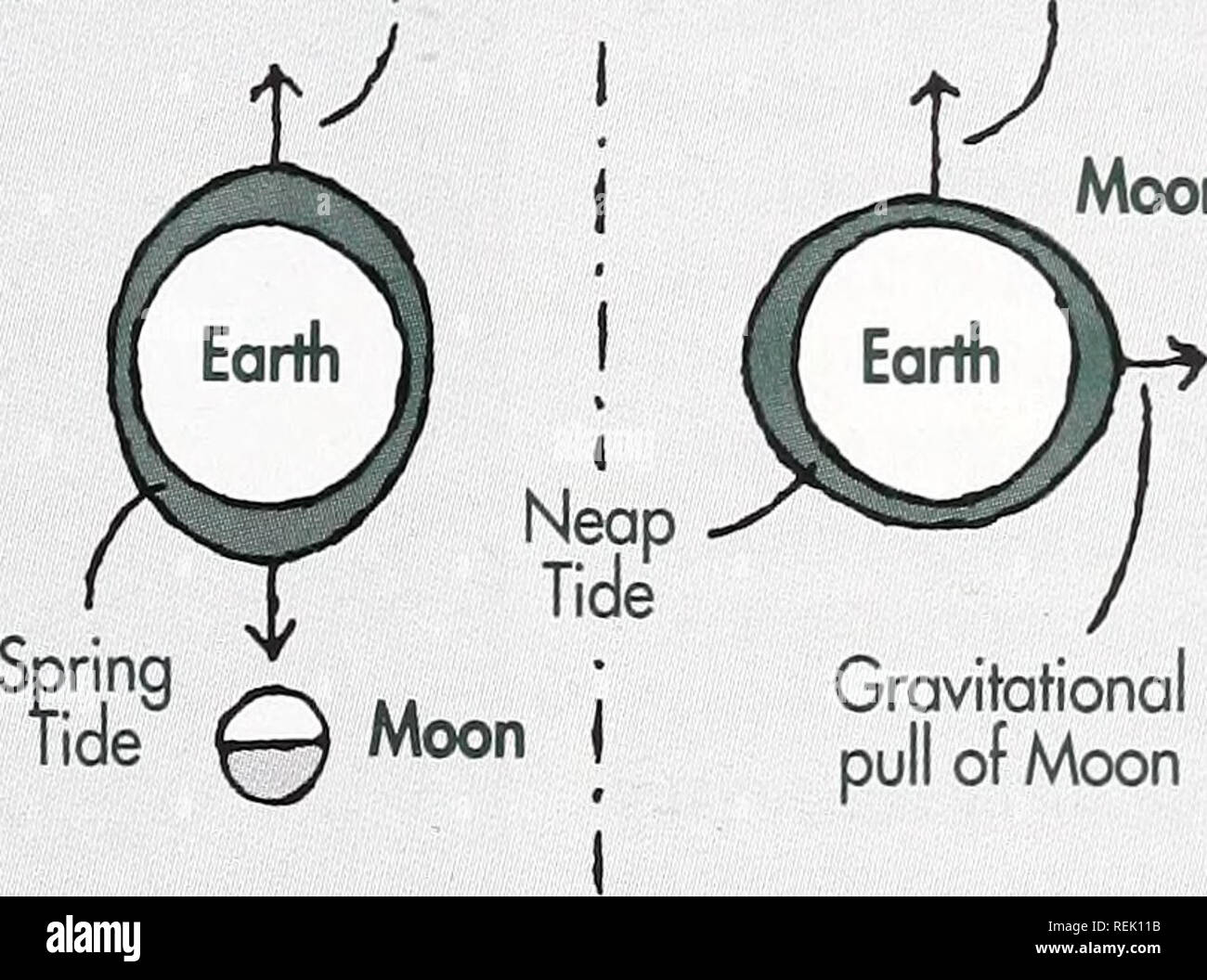. Coast watch. Marine resources; Oceanography; Coastal zone management; Coastal ecology. Gravitational pull of Sun Gravitational pull of Moon plus Sun J Gravitational pull of Sun Moon Gravitational pull of Moon Neap Tide. First Quarter c Full Moon Adapted from Marine Biology Tie term "spring" refers to the leap in tidal range, not the season. Spring tides may add 1 or 2 feet to the mean tide levels along the North Carolina coast, causing slightly higher high tides and lower low tides. A common misconception along Tar Heel shores is that spring tides occur only once monthly. Other Ext

Image details
Contributor:
The Book Worm / Alamy Stock PhotoImage ID:
REK11BFile size:
7.2 MB (357.5 KB Compressed download)Releases:
Model - no | Property - noDo I need a release?Dimensions:
1834 x 1363 px | 31.1 x 23.1 cm | 12.2 x 9.1 inches | 150dpiMore information:
This image is a public domain image, which means either that copyright has expired in the image or the copyright holder has waived their copyright. Alamy charges you a fee for access to the high resolution copy of the image.
This image could have imperfections as it’s either historical or reportage.
. Coast watch. Marine resources; Oceanography; Coastal zone management; Coastal ecology. Gravitational pull of Sun Gravitational pull of Moon plus Sun J Gravitational pull of Sun Moon Gravitational pull of Moon Neap Tide. First Quarter c Full Moon Adapted from Marine Biology Tie term "spring" refers to the leap in tidal range, not the season. Spring tides may add 1 or 2 feet to the mean tide levels along the North Carolina coast, causing slightly higher high tides and lower low tides. A common misconception along Tar Heel shores is that spring tides occur only once monthly. Other Extenuating Factors The moon's do-si-do with the Earth takes an elliptical course. Once each month, only 216, 000 miles separate our planet from the moon. At this close range, the moon is said to be at "peri- gee, " and the increased gravitational pull causes higher tides than normal. About two weeks later, at "apogee, " the moon is farthest away from Earth and its gravita- tional grip on the tides slackens. Tidal ranges have even greater variance when two or more of these monthly events overlap. For instance, a spring tide coinciding with the moon's perigee would cause more extreme fluctuations. Local weather conditions may either compound or dampen the intensity of the predictable astronomical events, says Rogers. Add to the equation a coastal storm such as a north- easter, he says, ©and you get flooding and accelerated erosion in beach communities. The notorious Hurricane Hazel skirted a spring tide to produce a storm of ferocious proportion. The fierce and famous Ash Wednes- day Storm, which swept the East Coast from the Carolinas to New England in March 1962, also attacked on a spring tide at the "dark of the moon." Coincidentally, the moon reached perigee within a half- hour of this astronomical alignment of the moon, sun and Earth. The result was a three-day storm that killed more than 40 people, toppled homes and businesses and submerged streets